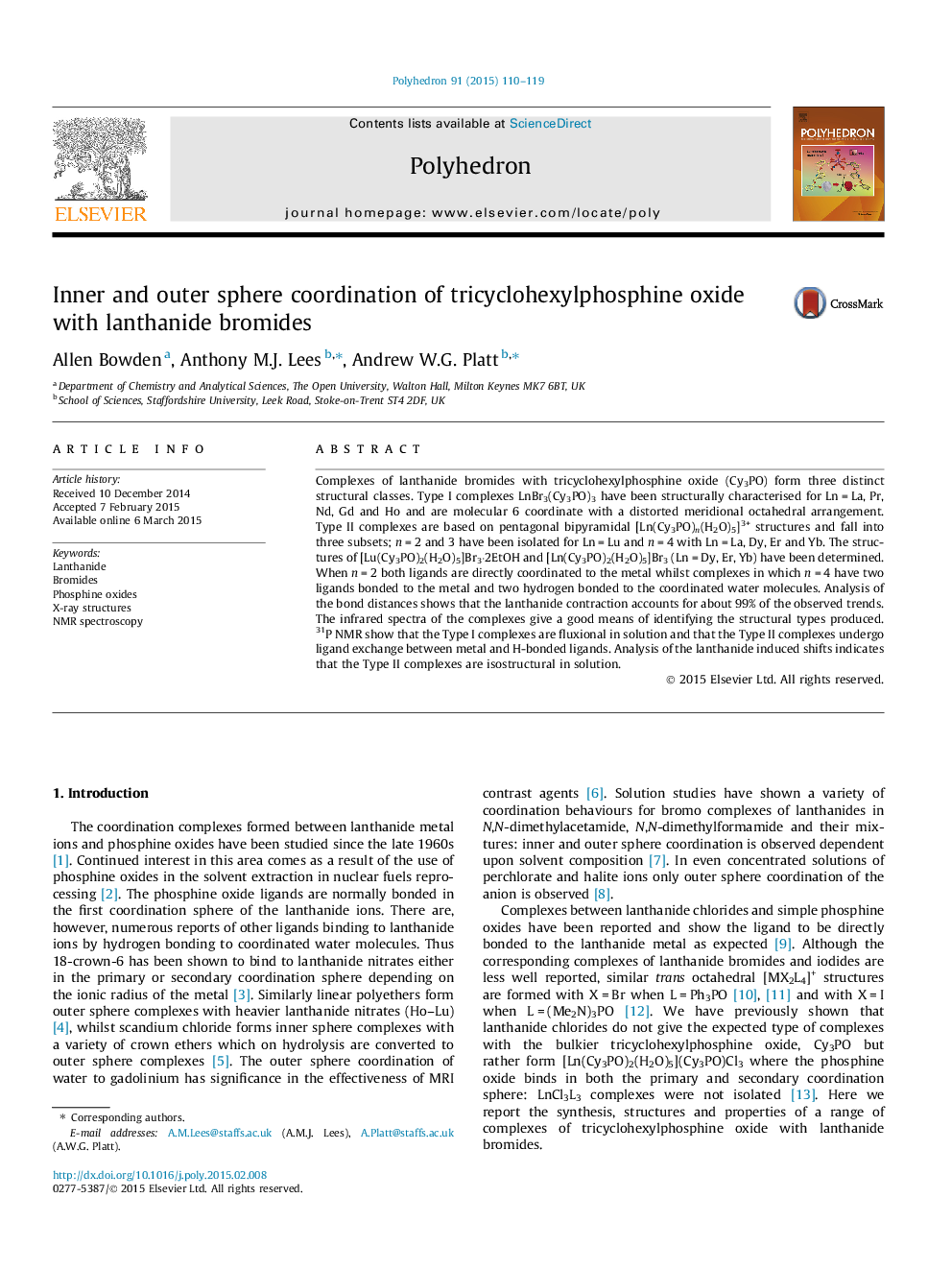| کد مقاله | کد نشریه | سال انتشار | مقاله انگلیسی | نسخه تمام متن |
|---|---|---|---|---|
| 1335234 | 1500248 | 2015 | 10 صفحه PDF | دانلود رایگان |
Complexes of lanthanide bromides with tricyclohexylphosphine oxide (Cy3PO) form three distinct structural classes. Type I complexes LnBr3(Cy3PO)3 have been structurally characterised for Ln = La, Pr, Nd, Gd and Ho and are molecular 6 coordinate with a distorted meridional octahedral arrangement. Type II complexes are based on pentagonal bipyramidal [Ln(Cy3PO)n(H2O)5]3+ structures and fall into three subsets; n = 2 and 3 have been isolated for Ln = Lu and n = 4 with Ln = La, Dy, Er and Yb. The structures of [Lu(Cy3PO)2(H2O)5]Br3·2EtOH and [Ln(Cy3PO)2(H2O)5]Br3 (Ln = Dy, Er, Yb) have been determined. When n = 2 both ligands are directly coordinated to the metal whilst complexes in which n = 4 have two ligands bonded to the metal and two hydrogen bonded to the coordinated water molecules. Analysis of the bond distances shows that the lanthanide contraction accounts for about 99% of the observed trends. The infrared spectra of the complexes give a good means of identifying the structural types produced. 31P NMR show that the Type I complexes are fluxional in solution and that the Type II complexes undergo ligand exchange between metal and H-bonded ligands. Analysis of the lanthanide induced shifts indicates that the Type II complexes are isostructural in solution.
Complexes of lanthanide bromides with tricyclohexylphosphine oxide (L) form in two distinct structural types. Type I, LnBr3L3 (Ln = La, Pr, Nd, Gd and Ho) are octahedral and Type II, [Ln(H2O)5L2]L2Br3 (Ln = Dy, Er, Yb, Lu), pentagonal bipyramidal with two L bonded to the lanthanide and two hydrogen bonded to the coordinated water. Over 99% of the changes in Ln–O and Ln–Br distances in Type I complexes can be accounted for by the lanthanide contraction. In the Type II complexes the hydrogen bonding of the coordinated water with phosphine oxides and bromide ions has a small influence on Ln–O distances. Variable temperature solution 31P NMR measurements show a variety of dynamic processes. Analysis of the lanthanide induced shifts indicates structural uniformity in solution.Figure optionsDownload as PowerPoint slide
Journal: Polyhedron - Volume 91, 8 May 2015, Pages 110–119
